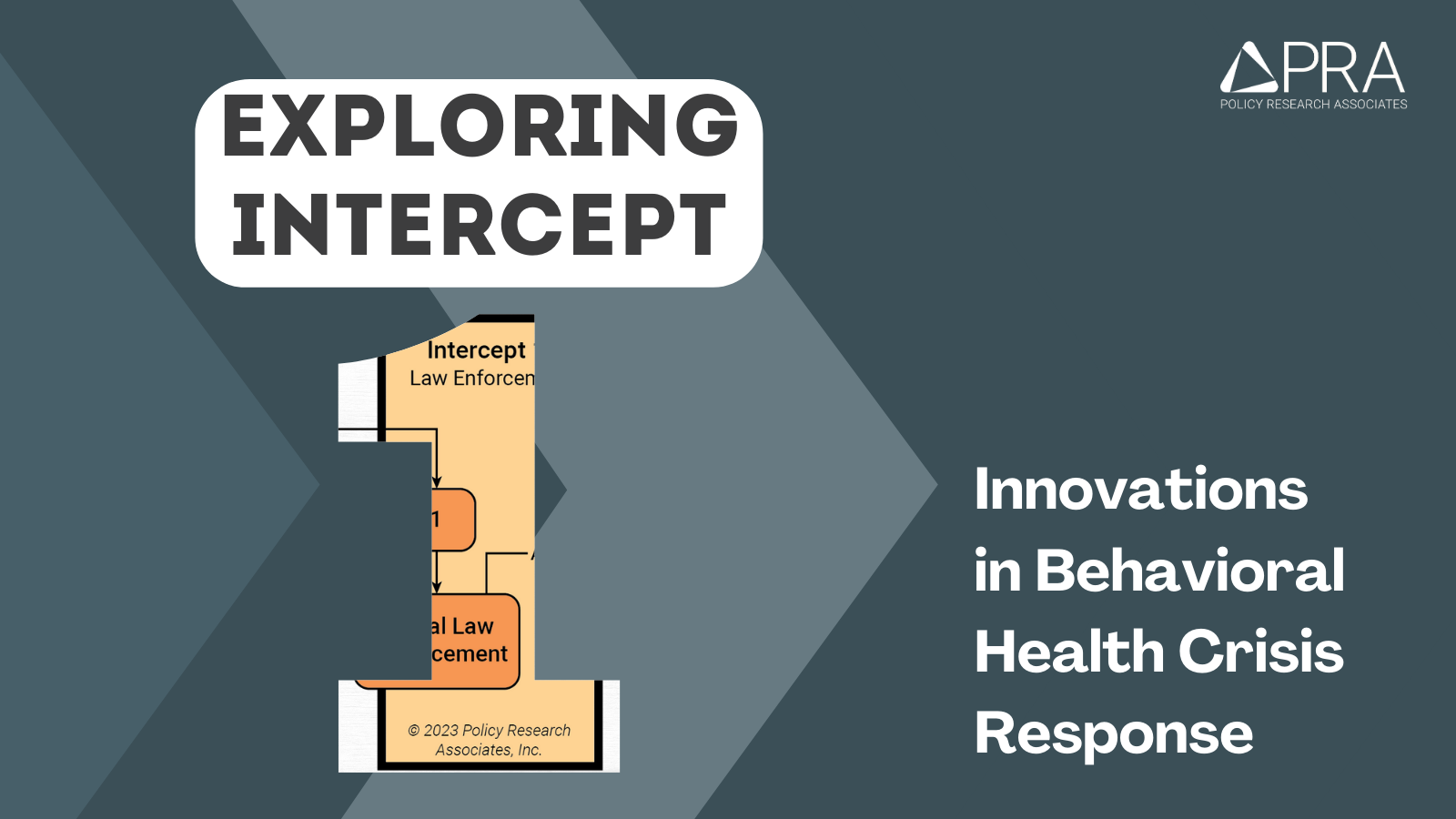Coming after Intercept 0, Intercept 1 is the second in the six-stage Sequential Intercept Model, a framework for understanding how people interact with crisis response and criminal legal systems. Find out how interventions at Intercept 1 can change the trajectory of people with mental health conditions and substance use disorders who are involved in or at risk of involvement in the criminal legal system.
What is Intercept 1, and why is it important?
Intercept 1 is a crucial stage in the Sequential Intercept Model (SIM) that focuses on law enforcement and emergency services’ initial contact with individuals experiencing mental and substance use disorders. This intercept aims to provide deflection and early diversion opportunities and ensure that appropriate responses are provided to prevent individuals from penetrating further into the criminal legal system. Early intervention at Intercept 1 can significantly impact the trajectory of individuals in crisis, offering alternatives that promote better outcomes for the individual and the community.
What systems fall under Intercept 1?
Intercept 1 encompasses various systems that are typically the first point of contact for individuals experiencing a behavioral health crisis. These systems include:
- Law Enforcement Agencies: Police officers and other law enforcement personnel often encounter individuals in crisis during their patrols and responses to emergency calls.
- 911 Call Centers: Dispatchers play a critical role in identifying calls related to behavioral health crises and directing appropriate resources.
- Emergency Medical Services (EMS): Paramedics and other EMS personnel respond to 911 calls and provide initial medical and crisis support.
- Fire Departments: In many communities, fire departments respond to emergency calls and may be the first to interact with individuals in crisis.
What are some promising practices and programs at Intercept 1?
Promising practices and programs at Intercept 1 focus on training, collaboration, and resource allocation to enhance the response to persons experiencing behavioral health crises. Some notable examples include:
- Co-responder Programs: Programs that pair law enforcement officers with behavioral health professionals who respond together to crisis situations. The behavioral health professionals provide immediate assessment and intervention, reducing the need for law enforcement action.
- Pre-arrest Deflection Programs: Initiatives that allow law enforcement officers to refer individuals to community-based treatment and support services instead of making an arrest. These programs often include follow-up to ensure the individual receives ongoing care.
- Crisis Stabilization Units and Behavioral Health Crisis Centers: Specialized facilities designed to handle behavioral health emergencies. Centers operate 24/7 and provide a safe alternative to jails or emergency rooms.
- Crisis Intervention Teams (CIT): CIT programs are comprehensive response strategies that involve training teams of law enforcement officers and connecting them with community-based resources and partners to better respond to people in acute crisis. An integral component of CIT is training that equips law enforcement officers with skills to handle crises involving mental health conditions and substance use disorders. CIT programs emphasize de-escalation, reducing the likelihood of use of force and promoting safety for both officers and individuals in crisis.
- Crisis Response and Intervention Training (CRIT): A 40-hour training program designed to prepare police officers in their response to people experiencing crises related to behavioral health conditions (including mental health conditions and substance use disorders) and intellectual and developmental disabilities. When used as the training component of a comprehensive, CIT-based response strategy, CRIT can be an effective tool to educate officers and prepare them for their role in responding to people in crisis.
- Mobile Crisis Units: Consist of behavioral health professionals who can be dispatched to the scene of a crisis. They provide immediate assessment, stabilization, and connection to services, reducing the need for police intervention and potential arrests.
- Collaborative Agreements: Formal agreements between law enforcement agencies and behavioral health providers to ensure coordinated responses to crises. These agreements outline roles, responsibilities, and protocols for collaboration.
- Community Education and Outreach: Programs that educate the public about behavioral health and crisis resources. Increased awareness can lead to better community support for individuals in crisis and reduce stigma associated with seeking help.
- Data-Driven Approaches: Using data to identify trends and inform policy and practice improvements. Data can help agencies understand the prevalence and nature of behavioral health crises in their communities and allocate resources more effectively.
How do these practices benefit individuals and communities?
The integration of promising practices at Intercept 1 offers substantial benefits for the communities, individuals, and systems involved:
- Enhanced Public Safety: Proper training and collaboration increase the likelihood of positive outcomes in law enforcement interactions and improve overall community safety.
- Better Health Outcomes: Individuals receive appropriate mental health care and support, leading to better long-term health outcomes.
- Reduced Reliance on Criminal Legal System: Deflection and diversion programs help lower arrest rates, improving outcomes for individuals and reducing the burden on law enforcement, jails, and courts.
- Cost Savings: Effective crisis response and deflection can lead to significant cost savings by reducing emergency room visits, court expenses, jail stays, and collateral costs for individuals.
- Strengthened Community Trust: Positive interactions between law enforcement and individuals in crisis can enhance public trust and improve community relations.
By focusing on early intervention and collaboration, Intercept 1 of the Sequential Intercept Model plays a pivotal role in transforming the response to behavioral health crises, ultimately fostering healthier, safer, and more resilient communities.


